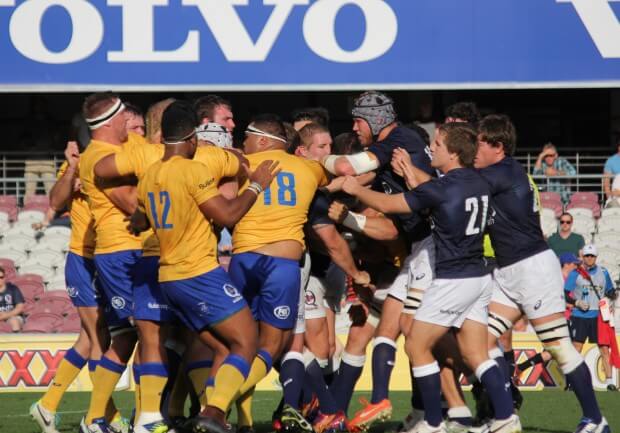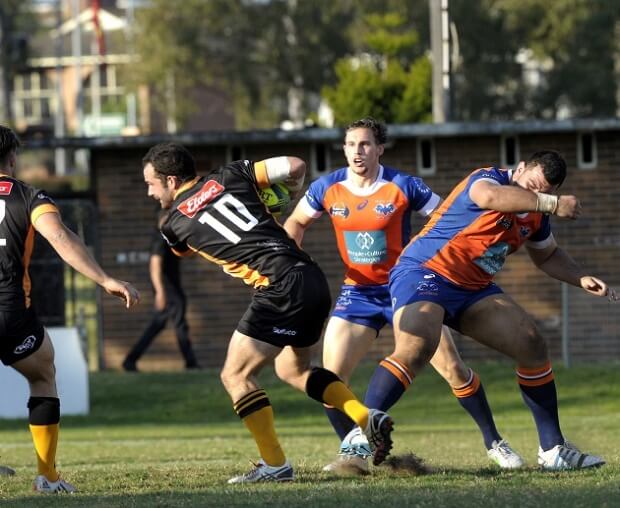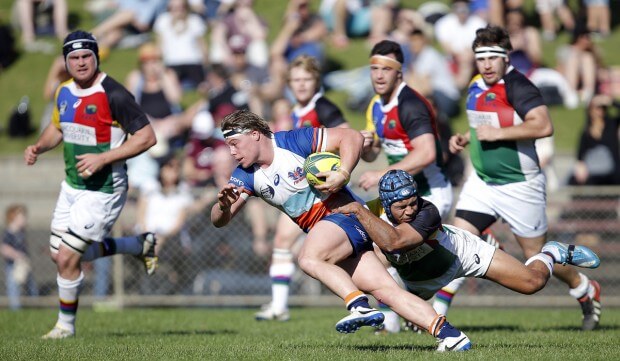With the final of the Shute Shield finishing Saturday and Northern Suburbs breaking a 41-year drought to take the title, those in NSW will soon turn their attention to the Rugby Championship and (hopefully) the NRC. However, for many New South Wales rugby followers of the NRC, one glaring problem is hard to ignore: once again, the historic lack of support from the Waratahs and the NSWRU for the competition. It’s no secret to many that the lack of support has been an underlying problem, further adding to the challenges of these NSW teams who come up against extremely competitive outfits chock full of Super Rugby talent. Some may even epitomise the issue as the gap between club rugby and the higher tier system.
But, let’s be honest. Judging by the results in the NRC, NSW teams need help. NSW Country, the Rays and the Rams have always been competitive, but often lose out. How is it that for Sydney to have arguably the strongest club rugby competition in the country, that our NRC teams keep losing? The talent is there, but to me it is clear what the problem is: The current management system in place between Sydney Rugby, the ARU and the NSWRU.
Comparing the systems

In terms of an example of good rugby management within the NRC, a great place to start is Queensland. Yes, I know that a lot of people will come complaining about how Queensland management shouldn’t be responsible for anything, given the dismal performance of the Reds over the last few years. But hear me out. The NRC has been one of the few success stories to have come out of Queensland rugby in recent times, both from a performance and management point of view. The reason for this is because Queensland Rugby is much more centralised.
Both teams are jointly managed by the QRU and the Reds. This means that the QRU is responsible for pretty much all of the advertising, organisation and planning around those two teams, while the Reds deal with the coaching and training programs, extending to super rugby players and many club players in the Queensland Premier Competition. This management was very easy to put in place because the QRU has always overseen the Brisbane club competition, and the regional club competition.
This management system works brilliantly for the NRC. Performance wise, Brisbane City have won the trophy two years running, and many of those players are now slotting themselves into the squad for the Rugby Championship. But in a managerial sense, not only does it enable the competition to access the wider audience that the Reds have through better advertising, but it also keeps the local clubs involved, and builds a great culture and rivalry. With the addition of the Andy Purcell Cup, there is now a buzz and a sense of history when City and Country come up against each other (as seen by the 5,000+ who turned up to Ballymore in 2014 to watch them play).
This model is also very similar in Victoria, WA and the ACT. The Dewar Shield, WA Premier Grade and John Dent I Cup competition are all managed by their respective state governing bodies. This means that the Melbourne Rising, Perth Spirit and Canberra Vikings receive training and club support from the Rebels, Force and Brumbies.
The Difference with NSW

There are many notable differences in terms of how rugby works in NSW. The NSWRU and Waratahs have been the subject of harsh criticism around not providing NRC support, but they have one major, major problem: funding. While issues of funding exist in pretty much all of Australian rugby, NSW is particularly restricted by it. The simple reason why this is the case is because NSW rugby operates at a much larger scale than other states.
NSW is continuously expected to, and does, produce a large majority of Super Rugby players. This makes their operations much costlier, and for the money they receive from the ARU, they do not have enough funding to support the Waratahs, Sydney Clubs, Subbies, Country competitions AND the NRC. Last year, it was no secret that if the Waratahs did not make the Super Rugby finals, they were facing a loss of over $1.5 million for the year. To put it simply, the NSWRU doesn’t have the money to put into the NRC.
To further add another spanner in the works is the fact that Sydney Club rugby runs very independently of the NSWRU, unlike the other respective state club competitions. What has happened instead is an alternative structure where the larger Shute Shield clubs together manage the NRC teams, provide the coaching and training, and are responsible for advertising and management. This system was created by the ARU, as the NRC itself was set up by the ARU as an elite pathway competition to Super Rugby.
And, despite only having Shute Shield support, The Sydney Rays and Country Eagles have been innovative with their marketing and advertising, and have had success in terms of developing a following, and attendance to games. Even the Rams, who arguably have it toughest of all have had some success, with the ‘Horned Army’, produced the Sydney Stars largest attendance last year when the Rams played them at Leichardt Oval, at 800. That’s saying something. That has all come from club support combined with money from the ARU. The NSWRU doesn’t have the money nor the influence within the club rugby landscape to help pay for all this.
It should be made clear that it’s not like the NSWRU hasn’t been sitting and twiddling their thumbs on the management front. Many teams in the NSW Junior Gold Cup (managed by the NSWRU) now have direct links to these NRC clubs. There is a clear sign that there is a huge amount of value in this link, as seen by the Western Sydney team beating Brisbane City last year in the final, 38-3.
So, what can be done?

Well, if there is any blaming to be had, part of me feels that it should be more directed towards the ARU instead of the Waratahs, as they approved this system. Obviously, if the ARU organised funding allocation to the different state unions based on actual participation numbers, NSW would get a larger chunk of the pie based on the amount of players they provide, and may well be able to put in place an efficient structure similar to what exists in Queensland. But that probably isn’t going to be happening any time soon.
There have been encouraging signs this year that things might be changing, with talk around club rugby and even an interview with the Western Sydney Rams saying that “by the end of 2016 greater ‘NSW operational’ alignment will exist between kids, subbies, community (Shute), elite pathway (NRC) and elite (Super) rugby levels.” With structural changes going on at the Waratahs, there seems to be an indication that productive dialogue could be starting up between the NSWRU and the NRC clubs.
The ARU, NSWRU and Sydney club rugby need to sit down and talk. What theoretically could they aim to do as a starting point?
- Getting NSWRU involved: The NSWRU and the Waratahs do have a substantial following in Sydney, which would help greatly for the NRC teams. Having some sort of advertising team at the NSWRU to compliment the current advertising efforts of the NRC clubs would do much to deal with the advertising problems.
- Funding: From a funding sense, the ARU should be considerate of the fact that NSWRU is in a very different situation compared with the other states, manages a much larger operation, and produces more quality players. The ARU should allocate funds to ensure the NSWRU can actually provide support to club rugby and the NRC.
- Add some Silverware: nothing creates rivalry like some silverware to play for! The NSWRU could create the NSW equivalent of the Andy Purcell Cup that NSW teams could compete for.
- Joint Management: Finally, the Sydney clubs should be recognising the fact that the NSWRU can provide a lot of support from a training, player allocation, and player development pathway perspective. The three NRC teams can still be managed by the Shute Shield clubs, but the NSWRU should also have a say in those clubs. A joint management system has been proven to work in Canberra, with the Vikings managed by the Brumbies, Tuggeranong Vikings Group, and the University of Canberra. So why not make it work in Sydney?
Now obviously, we have barely scratched the surface. Putting these ideas into practise will definitely be easier said than done. But, it can be done. Many may think that rugby may not be what it was in NSW, but if you were to go to Manly Oval when a derby match is on, or even North Sydney Oval (as seen by the attendance of over 12,000 fans who stormed the fields on Saturday), you may think differently.
What rugby needs it just needs the right management to ensure it grows. The NRC is a pathway to help in that growth, and credit must be given to the ARU for starting it, and the NSW club rugby teams for taking up the challenge. Community rugby has embraced this competition. Now the time has come for Sydney Rugby, the NSWRU and the ARU can put aside their differences, and work together to ensure the NSW teams reach their full potential.


